Femtosecond Laser System
The new femtosecond laser system, delivered at the Institute of Solid State Physics, consists of several units – amplifier, oscillator, pumping laser and TOPAS unit. The Ti:Sapphire regenerative amplifier is a Spitfire Ace model with pulse width ~ 35 fs and pulse energy ~ 6 mJ. The Spitfire Ace performs optimally when seeded with the revolutionary Mai Tai® SP oscillator. The Mai Tai SP laser is a true hands-free system that does not require whatever alignment, cleaning or adjustments.
The Spitfire Ace is pumped with Empower® 45 laser, which delivers over 45 W of average power in a compact package. Equipped with proprietary noise reduction technology, the Empower 45 is the quietest amplifier pump laser on the market.
With the combination of Spectra-Physics’ XP cavity, Mai Tai SP seeder and Empower 45 pump, the Spitfire Ace provides the most stable output available from a Ti:Sapphire regenerative amplifier. The enhanced stability makes the Spitfire Ace ideal for pumping multiple optical parametric amplifier (OPA) systems. The TOPAS Prime automated OPA is a state-of-the-art instrument for wavelength extension of the Spitfire® Ace™ Ti:Sapphire amplifier system. Wavelengths can be generated from the deep UV range through the infrared (189–2000 nm).
Nanostructures and nanosystems take advantage not only of the small dimensions of the objects but of the specific way of interaction between nano objects. The understanding of internal dynamics on the femtosecond time scale is utterly important and requires advanced measurement techniques. Here, comes the role of ultrashort laser pulses, with durations approaching the timescales of fundamental atomic and molecular processes.
The development of lasers with pulse lengths of the order of femtosecond laser sources allows better observation of ultrafast processes and time-resolved measurements. They deliver energy so quickly that new processes and investigations are achievable. The short pulse duration allows probing delicate living structures without bringing any damage to them. The material’s bulk and surface modifications on the nanoscale can be performed with precisely controllable heat effects.
Oxford Nanofab Plasmalab System 100
Chemical vapour deposition (CVD) is the creation of a layer on a substrate from a chemical reaction in a gas phase of one or more volatile precursors, which react and/or decompose on the substrate surface. In this way, high quality, high-performance, solid materials can be obtained. Microfabrication processes widely use CVD to deposit materials in various states, ranging from amorphous to epitaxial with different chemical composition.
Plasma-enhanced CVD (PECVD) utilizes plasma to enhance chemical reaction rates of the precursors. This allows deposition at lower temperatures, which is often critical in the manufacture of semiconductors.
The PECVD system of Oxford Instruments “Nanofab Plasmalab System 100” is a modern multi-purpose tool for various CVD and PECVD processes. The system has a vacuum loadlock and is designed for 2” – 8” wafer or other substrates. The maximal temperature of the substrate holder is 1200 °C which is suitable for deposition of graphene. Both radio-frequency (MHz) and low-frequency (kHz) plasma can be generated in the reaction chamber. The system is equipped with 6 gas lines which allows a variety of chemical processes. In the framework of the project INERA the tool will be used for growth of graphene and carbon nanotubes.
Potentially used gases are: ammonia, acetylene, methane (purity 99.999%), oxygen (purity 99.999%), hydrogen (purity 99.999%), nitrogen (purity 99.999%), and argon (purity 99.999%).
Beneq TFS 200 Atomic Layer Deposition
Atomic layer deposition (ALD) is a vapor phase technique capable of producing thin films of a variety of materials. Based on sequential, self-limiting reactions, ALD offers exceptional conformity on high-aspect ratio structures, thickness control at the Angstrom level, and tunable film composition. With these advantages, ALD is a powerful tool for many industrial and research applications.
The newly purchased within the framework of the European project INERA, Beneq TFS 200 is a flexible ALD platform designed for research and development. Direct thermal and plasma ALD operation and remote plasma-enhanced deposition (PEALD) are available in the TFS 200 as a standard option. The plasma is capacitively-coupled (CCP), which is the industry standard nowadays. The TFS 200 is capable of coating planar objects and complex 3D shapes with very high aspect ratio features. TFS 200 has unique precursor capabilities of temperature rating up to 400. A total of 6 different gas lines, 4 liquid sources and 3 hot sources fulfil the most demanding requirements.
Available precursors are: DEZ (Diethyl zinc), TMA (Trimethyl aluminum), BTBAS ((Bis(tertiary-butyl- amino)silane)), Ferrocene (bis(η5-cyclopentadienyl)iron), Cobaltocene (Bis(η5-cyclopentadienyl)cobalt), Nickelocene ((Bis(cyclopentadienyl) nickel(II)).
Preliminary tests of pristine and doped ZnO thin films on deposition Al2O3 were successfully performed.
Cleanroom Facility
These modern equipments are installed in a clean room class 10 000 with an area of about 40 m2. The mounted air conditioning ensures maintaining of temperature of 22o ± 2o C and humidity around 50% ± 10%, as well as a maximum of 10 000 particles, of size higher than 0.5 µm, per square foot. These parameters provide conditions for advanced nanotechnology research.
Portable Potentiostat and Galvanostat (Electrochemical Workstation)
A compact and powerful electrochemical workstation (SP-200, Bio-Logic) was delivered and installed at the Institute of Solid State Physics. The modular potentiostat/ galvanostat SP-200 incorporates the latest technology, has excellent specifications and can be applied as universal measurement device with main field of application in electrochemistry research.
SP-200 offers floating mode, analog filtering, build-in calibration board and excellent electronic stability for better cell control. The electrochemical workstation has been purchased equipped with an ultra low current probe, which extends the current range down to 1 pA; the upper current range is 500 mA, the reference voltage control is +/-10 V. Electrochemical impedance spectroscopy measurements in the frequency range from 10 μHz to 3 MHz are an additional option of the purchased instrument. The SP-200 coupled with the ultra low current probe allows a variety of possible applications in fundamental electrochemistry as well as nano- and bio-technology research, electrolysis and electrosyntesis processes, corrosion and coatings, photovoltaics, fuel cells, batteries, etc.
Membrane Filtration System
A complete laboratory membrane filtration system (MaxiMem, Prozesstechnik GmbH) has been delivered and installed at the Institute of Solid State Physics. The novel apparatus with its compact and flexible construction gives possibilities for performing all pressure driven membrane processes as reverse osmosis, nanofiltration, ultrafiltration and microfiltration. The filtration system is made of stainless steel frame, frequency controlled pump (operating pressure up to 60 bar), temperature controller for the jacketed feed vessel (volume 2.5 l to 100l), flexible membrane modules (from 200 cm2 up to 2.5 m2 membrane area) and electronic display. The experimental conditions for operating pressure, pump throughput, temperature, permeate flux, etc. are precisely controlled and recorded for further analysis and process design. The modern filtration set-up offers a variety of possible application as extraction and concentration of herbal substances for pharmaceutical usage, purification and desalting of valuable products, membrane filtration with large product amount, waste stream treatment and recycling, etc. The capabilities for alternative separation of thermally and chemically unstable substances make the equipment unique for this purpose.
Automated Microfluidic Platform and Automated Handheld Cytometer
Аn automated microfluidic platform CellASIC® ONIX, Millipore Merck for dynamic cell culture analysis and environmental control and Scepter 2.0 Automated Handheld Cytometer have been delivered and installed.
The Microfluidic Platform with its novel beneficial features gives a broad range of opportunities for long-term live cell analysis experiments by combining the highest precision controls, maximum functionality, and simplified user operation. The innovative microfluidics technology and design enables high precision microscopy studies and provides an improved cell culture environmental control with excellent media switching capabilities.
The Scepter 2.0 handheld automated cytometer provides a fast, convenient and accurate method for counting cells and particles in a wide range of object diameters. The cytometer is compact, easy to handle digital micropipette, on the screen of which for less than a minute information concerning your cell concentration, average size and volume, as well as size and volume cell distribution is displayed. The obtained experimental data are reliable and easily transferred to a PC for further processing and analysis
Automatic Spectroscopic Ellipsometer
In the framework of the Project INERA an automatic spectroscopic ellipsometer (M2000D, Woollam) has been delivered at the Institute of Solid State Physics, Bulgarian Academy of Sciences.
This unique apparatus, the first of its kind in Bulgaria, will be used for optical characterization of thin dielectric, semiconductor, metal and organic layers and multilayer structures and liquid samples.
Presentation of the capabilities of the new equipment was made on November 27, 2014 at Inter Expo Hotel during the meeting “Nanophotonics: New Optic Equipment in ISSP, BAS” with the representatives of leading companies in the field of industrial optics.


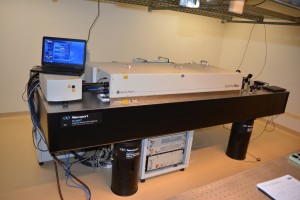
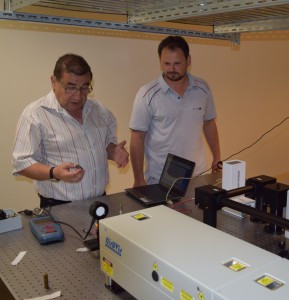
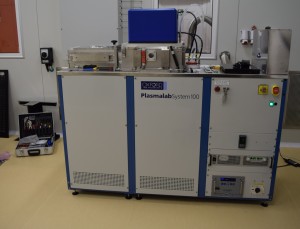
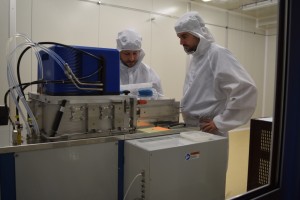
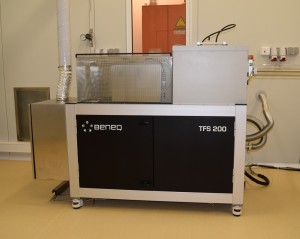
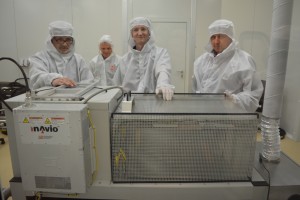
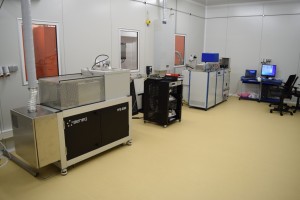
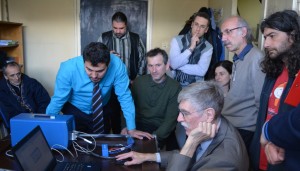
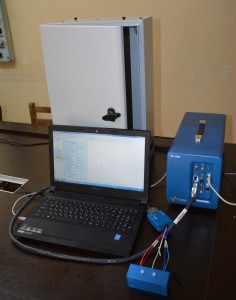
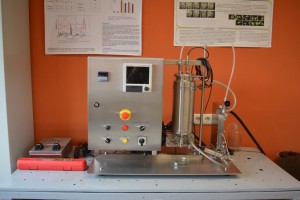
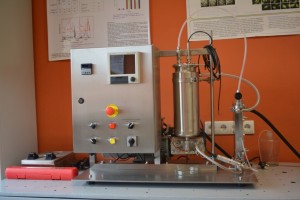
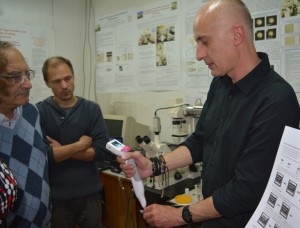
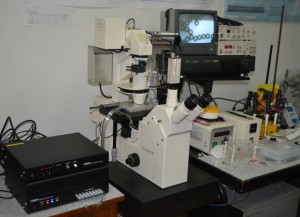
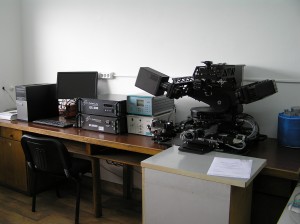
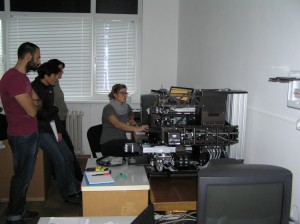



 Saving...
Saving...